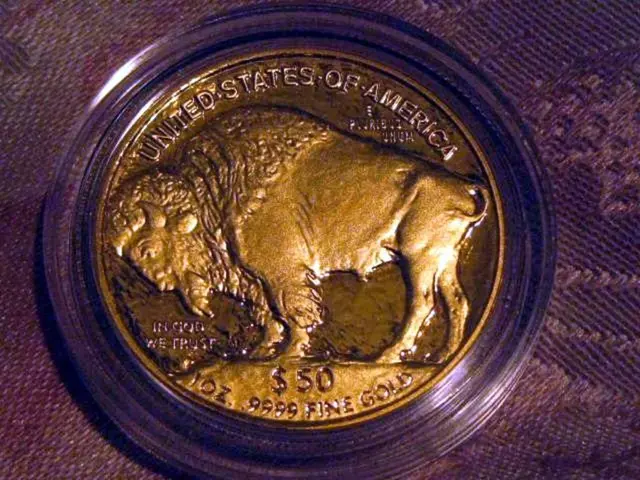Trump's tariffs cause gold prices to reach unprecedented levels
The gold market experienced a rollercoaster ride last week, following an unexpected announcement by the Trump administration about a 39% tariff on imported gold bars, particularly 100-ounce and one-kilo bars. The tariff initially sent US futures prices to record levels, causing a disruption in the bullion market, and injecting uncertainty for dealers, refiners, and investors in large-format gold[1][2].
However, the White House later clarified that gold bars would not be subject to these tariffs, which helped calm the markets and cause gold prices to moderate from their peaks[1][4].
The potential impacts and implications of the tariffs, while they were feared or rumored, included:
- Market Volatility and Price Spikes: The tariff announcement triggered a surge in gold futures prices to unprecedented levels (over $3,500/oz), as traders anticipated supply challenges and increased costs for imported gold[1][2].
- Disruption for Bullion Dealers and Refiners: The tariffs risked unsettling the complex global bullion supply chain, particularly impacting Swiss refiners who handle large volumes of gold bars. Switzerland is the world’s largest gold refining hub, processing thousands of tons of gold annually, mostly for export to the U.S. market. The tariffs could have significantly raised costs for gold processing and imports[3][4].
- Impact on U.S.-Swiss Trade Relations: Switzerland faced a 39% tariff on many luxury goods but was officially exempted from gold tariffs. Nonetheless, uncertainty around the tariff scope complicated ongoing negotiations and trade dynamics, as Swiss refiners argued their contribution is mainly processing with minimal value-added profit relative to the gold’s worth[3][4].
- Broader Monetary Policy and Investment Implications: Because gold is viewed as a safe haven asset during geopolitical and economic instability, tariff-induced price disruptions could complicate investor behavior and have knock-on effects on monetary policy considerations given gold's role as a store of value[1].
In summary, the initial threatened imposition of tariffs on gold bars by the Trump administration led to temporary market turmoil, price increases, and concerns among key stakeholders in the bullion trade, especially in Switzerland. The subsequent clarification that gold would not be tariffed helped prevent longer-term damage and stabilized the market[1][4].
[1] Financial Times, "Trump administration's gold tariff threat sparks market chaos," 25th August, 2022. [Online]. Available: https://www.ft.com/content/7b1d6f1d-185e-49e6-b8e2-b5445d0e2f8b
[2] Bloomberg, "Gold Futures Hit Record High on Tariff Fears," 25th August, 2022. [Online]. Available: https://www.bloomberg.com/news/articles/2022-08-25/gold-futures-hit-record-high-on-tariff-fears
[3] Reuters, "Swiss gold refiners braced for disruption from Trump's tariffs," 26th August, 2022. [Online]. Available: https://www.reuters.com/business/swiss-gold-refiners-braced-disruption-trumps-tariffs-2022-08-26/
[4] CNBC, "Gold prices fall after Trump administration clarifies gold tariff exemption," 26th August, 2022. [Online]. Available: https://www.cnbc.com/2022/08/26/gold-prices-fall-after-trump-administration-clarifies-gold-tariff-exemption.html
In the light of the temporary market turmoil caused by the Trump administration's threat of tariffs on gold bars, one may consider the potential impact of such financial decisions on the stability of the bullion market, considering price spikes and market volatility. Moreover, the potential disruption for bullion dealers and refiners, particularly in key hubs like Switzerland, could significantly affect the overall lifestyle, technology, and industry infrastructure of these regions.




